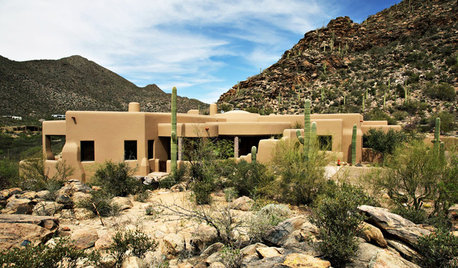root veggies hate my soil mix...help!
kawaiineko_gardener
12 years ago
Related Stories

CONTAINER GARDENSContainer Gardening Basics: The Dirt on Soil
Learn the types of potting soil available and the best mixes to help your containers thrive
Full Story
FARM YOUR YARDHow to Get Good Soil for Your Edible Garden
The nutrients in your soil feed the plants that feed you. Here are tips on getting it right — just in time for planting season
Full Story
GARDENING GUIDESGardening Solutions for Heavy Clay Soils
What’s a gardener to do with soil that’s easily compacted and has poor drainage? Find out here
Full Story
GARDENING GUIDESHow to Stop Worrying and Start Loving Clay Soil
Clay has many more benefits than you might imagine
Full Story
GARDENING GUIDESHouzz TV: Make a Worm Bin for Rich Soil and Happy Plants
A worm-powered compost bin that can fit under a sink turns food scraps into a powerful amendment for your garden. Here’s how to make one
Full Story
LANDSCAPE DESIGNFlood-Tolerant Native Trees for Soggy Soil
Swampy sites, floodplains, even standing water ... if you've got a soggy landscape, these trees are for you
Full Story
GARDENING GUIDES10 Solutions for Soggy Soil
If a too-wet garden is raining on your parade, try these water-loving plants and other ideas for handling all of that H2O
Full Story
FARM YOUR YARDHow to Build a Raised Bed for Your Veggies and Plants
Whether you’re farming your parking strip or beautifying your backyard, a planting box you make yourself can come in mighty handy
Full Story
GARDENING GUIDES8 Plants That Snobs Love to Hate — and You'll Love to Grow
Don't dismiss these common annuals, perennials and shrubs — there are reasons they've been popular for so long
Full Story
TRADITIONAL ARCHITECTURERoots of Style: Pueblo Revival Architecture Welcomes Modern Life
Centuries-old details of adobe construction still appeal in the desert Southwest, adapted to today's tastes
Full StoryMore Discussions






bi11me
Kimmsr
Related Professionals
Cary Landscape Architects & Landscape Designers · Oatfield Landscape Architects & Landscape Designers · Newcastle Landscape Architects & Landscape Designers · Forest City Landscape Architects & Landscape Designers · Aurora Landscape Contractors · Americus Landscape Contractors · Golden Gate Landscape Contractors · Nashua Landscape Contractors · Ronkonkoma Landscape Contractors · York Landscape Contractors · Crowley Landscape Contractors · Hendersonville Decks, Patios & Outdoor Enclosures · New Albany Decks, Patios & Outdoor Enclosures · St. Louis Decks, Patios & Outdoor Enclosures · Windsor Decks, Patios & Outdoor Enclosuresssmdgardener
kawaiineko_gardenerOriginal Author